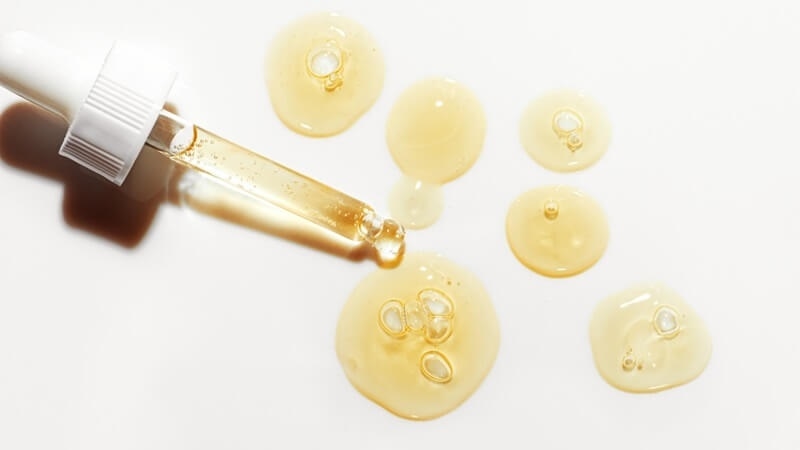
Every year, the beauty world finds a new buzzword. A few years ago, it was peptides. Then hyaluronic acid had its moment. More recently, retinol and niacinamide dominated shelves. And now? Exosomes are making the rounds. If you’ve been scrolling through skincare blogs or listening to dermatologists on social media, you’ve probably seen the phrase “exosome therapy” popping up. Some call it the future of skin health. Others roll their eyes and mutter “just another fad.”
So, where does the truth lie? Is Exosome skincare really a breakthrough, or are we looking at a shiny new trend that will fade like so many before it?
Let’s strip away the jargon. Exosomes are tiny particles naturally released by cells in the body. You can think of them as little messengers. They carry proteins, lipids, and bits of genetic material between cells. In medicine, exosomes have been studied for roles in healing, immune responses, and even cancer research.
But in beauty, the question is different. What are exosomes in skincare, and why are they being added to creams and serums? The idea is that when applied topically, these microscopic messengers could signal skin cells to behave more youthfully — boosting collagen, repairing damage, and reducing inflammation.
Sounds impressive, right? But does it actually work?
The hype around exosomes comes from their link to regeneration. Unlike some ingredients that only sit on the skin’s surface, exosomes are said to communicate with skin cells, nudging them to repair and rejuvenate.
Proponents claim benefits like:
Faster wound healing
Improved hydration
Reduced redness and inflammation
Firmer, plumper skin over time
Dermatologists intrigued by the science suggest exosomes could go beyond treating wrinkles. They may play a role in calming acne, rosacea, or even skin damaged by aggressive treatments like lasers.

Here’s the thing. Most of the glowing reviews about exosomes come from labs, not long-term clinical trials on everyday consumers. Translating medical science into skincare is never straightforward. Just because exosomes do amazing things in a petri dish doesn’t mean they’ll survive inside a jar on your bathroom counter.
Formulation is tricky. Are the exosomes stable? Do they penetrate deep enough to matter? And let’s not ignore the cost. Many exosomes skincare products come with hefty price tags, often far higher than proven ingredients like retinoids or vitamin C.
So yes, there’s potential. But there’s also plenty of room for skepticism.
One way to understand the debate is to compare exosomes with what’s already available. Retinoids, for example, are backed by decades of research showing they increase cell turnover and reduce wrinkles. Hyaluronic acid pulls moisture into the skin, improving hydration almost instantly.
Exosomes, in contrast, don’t yet have that track record. They promise regenerative communication at a cellular level — something no other ingredient claims to do — but the proof in real-world skincare is still limited.
For consumers, it boils down to this: do you want to experiment with cutting-edge science now, or wait until there’s more research and better accessibility?
Despite the uncertainties, beauty brands aren’t waiting. They’re rushing to market with creams, serums, and even post-procedure treatments infused with exosomes. Medical spas are offering exosome add-ons to facials. Dermatology clinics are pairing them with laser or microneedling sessions, saying they speed up healing and enhance results.
The excitement isn’t baseless. Early reports from dermatologists experimenting with Exosomes skincare suggest patients do see quicker recovery and glowier skin after treatments. But these are small studies, often anecdotal. Not the kind of data that convinces skeptics.
In Case You Missed It: Best Frizzy Hair Control Tips and Hacks for Humid Weather
Let’s be honest: price always matters. Many exosome products are marketed as luxury items, running into hundreds of dollars per jar. For that kind of money, consumers expect miracles. And that’s part of the issue — lofty promises paired with premium pricing.
The danger is people splurge, expecting dramatic transformations, only to find the results subtle at best. That can leave a bad taste, making exosomes look like hype rather than potential.
Another angle to consider: safety. Because exosomes are cell-derived, they spark questions. Where do they come from? How are they processed? Are they safe for everyone?
Reputable brands will provide transparency, often sourcing from stem cells or plant-based alternatives. But as with any trendy ingredient, there’s a risk of companies cutting corners to ride the wave. Consumers need to be cautious, checking sourcing, testing, and reviews before trusting new products.
Exosomes may well be the future, but there are big questions still on the table:
How stable are exosomes in skincare formulations?
Do they penetrate deep enough to influence cell behavior?
Are there long-term studies proving efficacy and safety?
What’s the difference between exosomes used in medicine versus beauty products?
Until researchers can answer these, exosomes will remain caught between hype and promise.
So, where does this leave the average skincare enthusiast? If you’re curious, have the budget, and understand the limitations, trying exosome products might be an interesting experiment. Just don’t ditch your proven essentials. Sunscreen, retinol, vitamin C — these still form the backbone of any effective routine.
Exosomes may add a boost, but they shouldn’t replace the basics.
Part of why exosomes feel hyped is the way they’re marketed. Brands love to throw around terms like “cellular communication” and “skin regeneration” without breaking down what that really means. They rely on the allure of science-y language to hook consumers.
It’s not unique to exosomes, of course. The beauty industry thrives on buzzwords. But in this case, it blurs the line between scientific discovery and cosmetic claims.
Despite all the doubt, there are areas where exosomes might deliver. Post-treatment recovery is one of them. Early adopters say patients who use exosomes in skincare after procedures like microneedling or chemical peels heal faster, with less redness and downtime.
If these claims hold, exosomes could become a valuable partner to medical aesthetics, even if their role in everyday creams remains limited for now.
Further Reading: Skincare Ingredients Guide for Beginners and Experts
So, is Exosome skincare breakthrough or hype? The honest answer: both. The science is fascinating, the potential is huge, but the real-world evidence is still catching up. For now, exosomes feel more like a glimpse of the future than a guaranteed solution.
If you’re a skincare junkie who loves experimenting and has money to spare, exosome products might be worth exploring. If you’d rather wait for stronger proof and friendlier prices, stick to the tried-and-true staples.
The bottom line? Exosomes are exciting. But until more research and long-term data back them up, it’s best to treat them as a bonus, not a miracle.
This content was created by AI